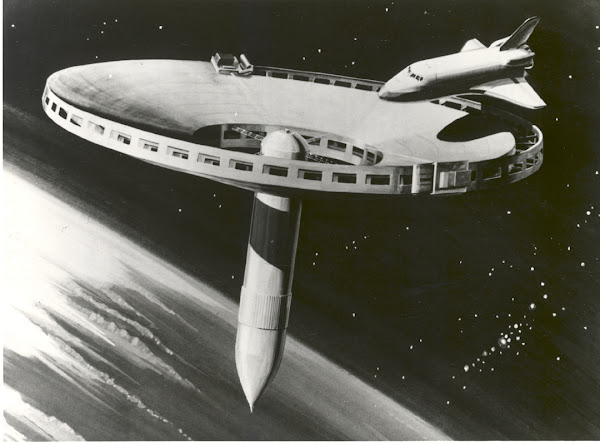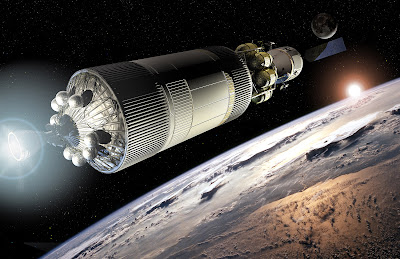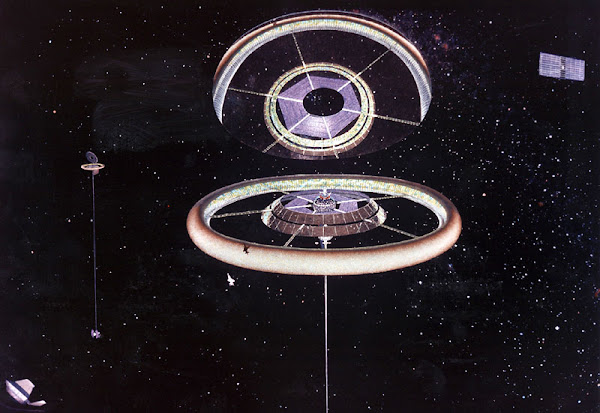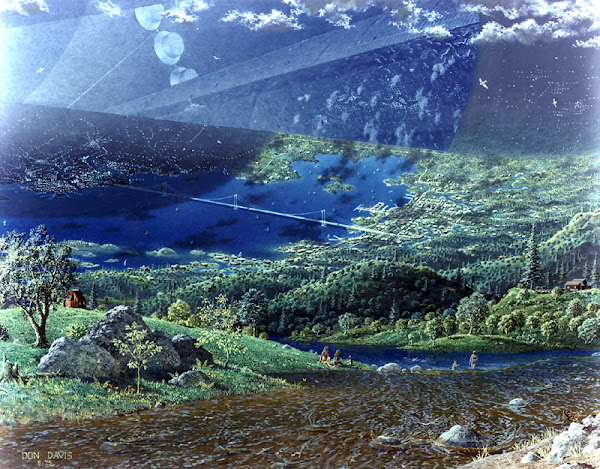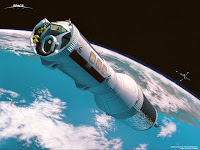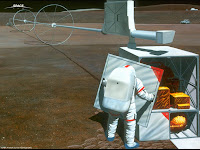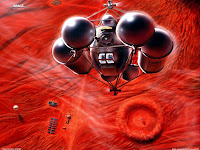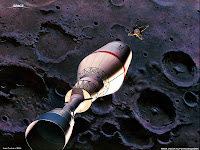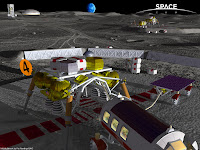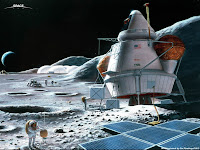Beautiful space drawings by Russell Arasmith. These were used by NASA to illustrate the Apollo 9 Mission. The NASA description is given for each illustration below.
Russell Arasmith is an American illustrator. After graduating high school in 1945, he enlisted in the Army Air Force where he served as a radar operator. Upon leaving the service in 1946, he attended the American Academy of Art in Chicago for a year, leaving to work on The St. Joseph News Press two years later. In 1949, he took a job with the Kansas City Star in Kansas City, where he worked for 11 years before being offered a job at the Los Angeles Times.
Artist says: "I worked with The Times 32 years. I was Editorial Art Director for 17 years there. I did all the space drawings for the Times. Those drawings are the result of extensive briefings I attended at various space centers. All were done before the fact "on deadline" [on the same schedule with] the individual missions involved. The articles and my drawing were run in the Los Angeles Times on the day the actual event occurred. The Times Syndicate distributed the art work to 300 newspapers all over the world."
Russell Arasmith retired from the Los Angeles Times in 1992 and currently resides in Orange County, California.
Note: All artwork and images copyright © Russell Arasmith. Please do not use images without the permission.

Command module and attached service module separates from third stage and four petal-like panels making up lunar module adapter section are ejected to export the lunar module. Command/service modules separate to distance of about 50 feet then turn around and return to dock nose first with lunar module.

Legs of lunar module are extended and service rocket is burned for first time on mission. This drawing illustrates first service rocket burn on first day or any one of three service rocket burns on second day of the mission. Lunar module is still unoccupied at the time. The three crewmen remain in the command module.

After two crewmen check out lunar lander, they power up vehicle for test of lunar module descent engine. This is throttle able rocket in lower stage of two stage moon landing vehicle that will be used on future landings missions to lower men to the moon’s surface.

Astronaut Schweickart shown on space walk (EVA) between vehicles on forth day to demonstrate the lunar module crewmen could return to command module be tether line in case docking tunnel is blocked for some reason. He will use handrail up face of lunar module and handgrips on command module. Plan is for him to step into open hatch of command module (lower torso) then return to lunar module.

On Fifth day, Lunar Module crew returns to lander (leaving Scott in command ship) and the two spacecraft are separated for manoeuvres. After tow vehicles are positioned as planned, the lunar module’s descent (lower) stage is jettisoned, leaving tow-man crew in upper or ascent stage. Drawing shows separation of two stages.

Here the ascent stage engine is fired to place upper stage of landing vehicle on proper orbit fro rendezvous with command ship. Two spacecraft must rendezvous, dock, so lunar module crewmen can return to command craft for re-entry. Lunar module is designed only for space/lunar operations and cannot re-enter earth’s atmosphere without burning up.
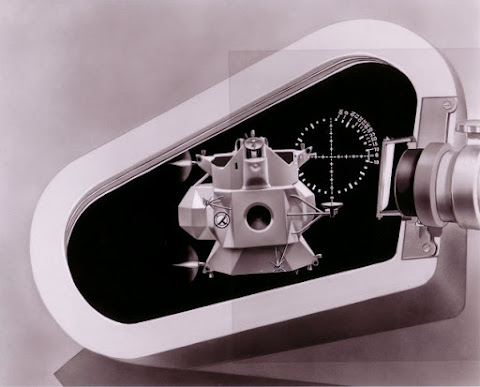
View through window of command module as lunar module manoeuvres through final sequence to complete docking operation. Lighted reticule on window will help Astronaut Scott check lineup of two vehicles by placing cross lines on target just to left of lunar module’s docking cone.

After docking, Lunar Module crew will return to command module and the lunar module ascent stage will be separated from the command module for a long duration burn that will place it (unmanned) in a high elliptical orbit. Then, for rest of mission, day 6 through day 10, the pace will be more leisurely, and Apollo’s service rocket will be burned several more times, including a de-orbit burn to initiate re-entry, as shown in drawing.

Interior view of McDivitt, left, at standing station in LM, watching Schweickart back slowly out of forward hatch to begin space walk of about two hours. Schweickart wears backpack life-support system. The cable restraints hold McDivitt in position.
Link: Apollo 9 Art by Russell Arasmith (Apollo Mission Control Photo Plus).
Gallery: Russell Arasmith Space Art Gallery (Marshall Space Flight Center in Alabama).
